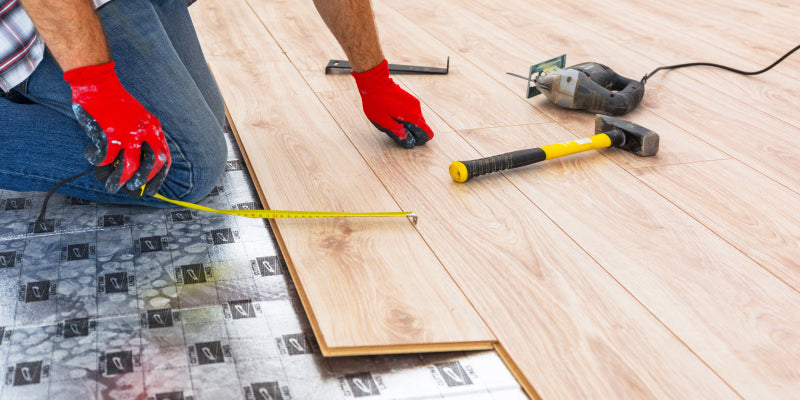
Can You Install Engineered Hardwood Over Underfloor Heating?
|
|
Time to read 2 min
|
|
Time to read 2 min
If you’re considering installing a radiant heating system in your home, but you’re on the fence because you’ve heard rumors that underfloor heating can damage hardwood floors, fear not. There is an alternative to solid hardwood flooring that looks identical but won’t dry out from exposure to underfloor heating. A correctly installed engineered hardwood floor can resist damage from underfloor heating better than it can resist most localized heating sources.
Here’s how to make wood and underfloor heating work together in your home.
First of all, use engineered wood flooring instead of solid wood flooring. Made from multiple layers, engineered wood flooring consists of a plywood or HDF core and a top layer of hardwood veneer. Along with enhanced stability, this construction makes engineered planks less susceptible to contraction and expansion due to moisture and temperature changes compared to solid hardwood. Due to the added thickness of engineered hardwood layers, this flooring is less vulnerable to the possible expansion and contraction caused by sudden changes in temperature or humidity. It is also a very stable flooring option and there are now fully waterproof versions available. You also need to consider plank size and room layout before you begin. For heat to effectively reach the room, the overall flooring thickness should be no more than 18mm, and the solid wood layer on the top should be no thicker than 5 mm. The wider the boards you install, the greater the risk of the boards developing gaps between them when they contract. The maximum recommended width of a board used in hardwood flooring above radiant heat is 3 inches. You can also reduce gaps by using parquet flooring, tongue-and-groove strips, or boards with beveled edges. Before installing the wood, allow it to adjust to the natural temperature and humidity inside your home. Open any packaging around unfinished wood products, and place them inside the home until they have adjusted. According to the National Wood Flooring Association , wood products should remain at ambient humidity and ideal temperature (65°F to 75°F) for seven days before installation, during installation, and seven days after installation. Gluing down flooring as opposed to nailing or using other methods allows the wood to expand and contract slightly without it being permanently damaged, because the glue is elastic. Here is a guide to installing engineered hardwood with the glue down method. Correctly installing an efficient radiant heating system in your home can ultimately save you energy and money on electricity. It is an eco-friendly alternative to a traditional central heating system. Now that you know how to put it to work under your hardwood floors, you have no excuses. Go green, and install an underfloor heating system during your next renovation.What to Consider Before Installing
Choose the Right Wood
Plank Size Makes a Difference
Acclimate the Wood
Affix With Glue